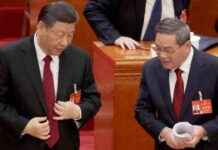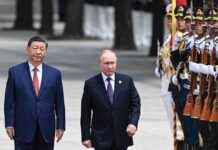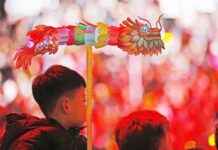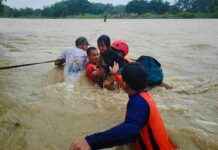In California, Rainnie, a 27-year-old Chinese woman, found herself in a state of urgency as she awaited the arrival of her baby. Her due date loomed just a day before the cut-off date set by US President Donald Trump’s executive order, which threatened to strip birthright citizenship from babies born after February 19. This order, signed on Trump’s return to the White House, stirred up a whirlwind of uncertainty and fear among parents like Rainnie, who had journeyed to the US with hopes of securing a brighter future for their children through American citizenship.
The executive order, which called for agencies to reject citizenship recognition for babies born in the US after the specified date if neither parent was a US citizen or lawful permanent resident, sent shockwaves through immigrant communities, particularly among Chinese families engaged in “birth tourism”. This practice, where expectant mothers travel to the US to give birth, has been a longstanding tradition for many seeking to provide their children with the privileges and opportunities that come with US citizenship.
As more than 20 states rallied to challenge Trump’s order through lawsuits, federal judges intervened to halt its implementation. The legal battle over birthright citizenship teetered on the brink of escalation to the US Supreme Court, leaving families like Rainnie’s in a state of limbo, unsure of what the future held for their US-born babies.
The Impact of Birth Tourism on Immigration Policy
The phenomenon of “birth tourism” has long been a contentious issue in the realm of immigration policy. While exact figures on the number of babies born to parents engaged in this practice remain elusive, estimates from the US Department of State suggest that the numbers are in the thousands. However, the Centre for Immigration Studies, a think tank advocating for reduced immigration levels, paints a more alarming picture, suggesting that the figure could exceed 20,000 births annually.
The debate surrounding birth tourism intertwines complex legal, social, and ethical considerations. For many immigrant families, the decision to pursue birthright citizenship for their children in the US stems from a desire to offer them a foothold in a country known for its educational, economic, and societal opportunities. However, critics of the practice argue that it undermines the integrity of US immigration laws and raises questions about the true motives behind such endeavors.
As policymakers grapple with the implications of birth tourism and the broader issue of birthright citizenship, the fate of families like Rainnie’s hangs in the balance. The outcome of legal battles and potential policy changes could have far-reaching consequences for those who have placed their hopes and dreams in the promise of American citizenship for their children.
In the midst of this uncertainty, Rainnie and countless other parents face a challenging road ahead as they navigate the shifting landscape of immigration policy in the US. The delicate balance between upholding the principles of birthright citizenship and addressing concerns about abuse and exploitation of the system remains a central point of contention in ongoing debates over immigration reform.
As the fate of US-born babies of non-citizen parents hangs in the balance, the future of birthright citizenship in America remains a hotly debated issue with implications that stretch far beyond legal statutes and court rulings. For families like Rainnie’s, the stakes are high as they grapple with the uncertainty of what lies ahead for their children in a country where the promise of citizenship is both a beacon of hope and a source of profound anxiety.



























